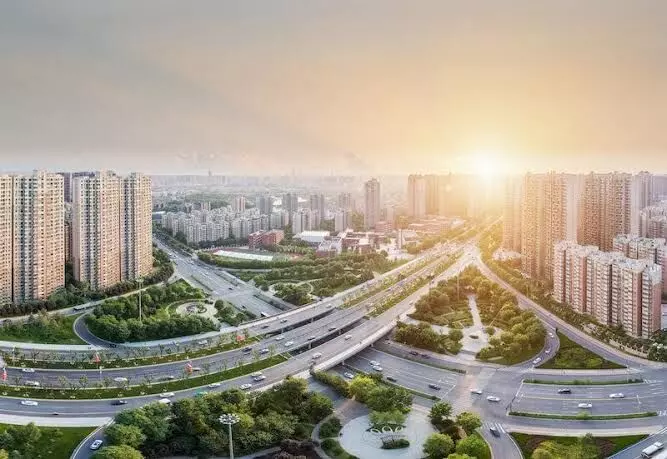Urbanisation led to 60 pc more night-time warming in Indian cities than non-urban areas: Study
Indian Institute of Technology Bhubaneswar in its study found that urbranisation led to 60 pc more night-time warming in Indian cities
By Newsmeter Network
New Delhi: Urbanization has led to nearly 60 per cent more night-time warming in over 140 prominent Indian cities compared to non-urban areas surrounding them, a new research from the Indian Institute of Technology Bhubaneswar has found.
According to the research, Ahmedabad, Jaipur and Rajkot had the highest urban effect, while Delhi-NCR and Pune were found to be at the fourth and fifth position, respectively.
Urbanisation is known to be responsible for the urban heat island (UHI) effect, in which the concrete and asphalt (used in constructing roads and pavements) surfaces store heat during the day and release it in the evening, thereby raising night-time temperatures.
Over time, this heat further affects other aspects of climate, including rainfall and pollution, researchers said in the study published in the journal Nature Cities.
The study sought to determine how much urbanisation and local climate change each contributed to raising night-time temperatures over the past two decades (2003-2020).
"The mean urban effect for all these cities across India was found to be 0.2 degrees Celsius per decade. This leads to an estimate of 37.73 per cent of the total urban warming being linked to urbanisation -- that is, nearly 60 per cent enhancement of warming relative to the surrounding non-urban areas," the authors wrote.
They also found that cities in the northwestern, northeastern and southern regions showed a "more pronounced increase" in night-time temperatures than in the other parts of the country.
However, the contribution of urbanisation towards night-time warming was higher in the eastern and central Indian cities, which are developing and thereby, undergoing rapid expansion, the researchers said.
Almost all the cities, included in the analysis, showed rising night-time surface temperatures, which have increased by about 0.53 degrees Celsius on average every decade.
Further, the trend of hotter night-time temperatures was not limited to the cities, as most of India warmed by 0.26 degrees Celsius on average every decade during the period studied, the researchers said.
This indicated that cities were warming at almost double the rate at which the whole country was warming, they said.
The authors explained that as cities are highly vulnerable to the combined effects of urbanisation and climate change, the people and the infrastructure in these areas are on the "frontlines" of climate change consequences, such as heatwaves, extreme weather events and flooding.
They said the study highlighted the need for diverse mitigation efforts for effectively lowering the ongoing urban warming.
According to an analysis by the Centre for Science and Environment (CSE), New Delhi, cities are not cooling down at night like they used to during 2001-2010 because they have "become more concretised in the last two decades" contributing to the rise in heat stress.
They said that while increasing green cover can moderate day-time heat, it is ineffective for arresting night-time heat.
According to the World Resources Institute (WRI) India Ross Center, seven out of 10 people around the world are projected to live in urban areas by 2050. While about 90 per cent of the growth is expected to happen in the Global South, a significant fraction of this will occur in India, it said.
Currently, 36 per cent of India's population, or about 40 crore, is urban and will double to 80 crore by 2050, according to the WRI India Ross Center.
With India projected to become the fastest growing economy globally, and expected to witness the greatest urban growth, the latest findings could help urban planners and policymakers better allocate resources and understand the scale of planning required for building sustainable cities, the authors said.
(Inputs from PTI)